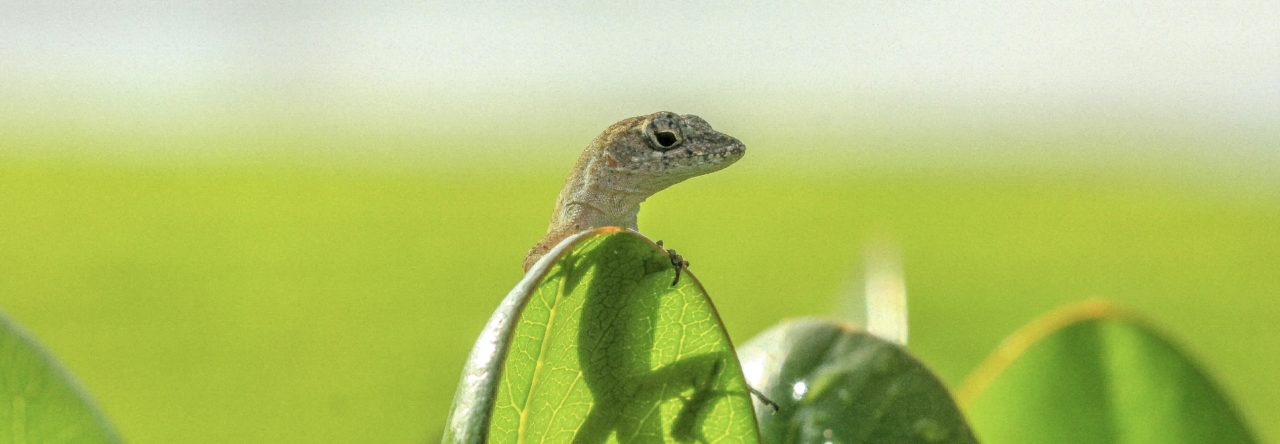The World Congress called on Emma Sherratt to serve as the closer, presenting the last talk on the last day of the meeting. The choice proved brilliant, as she sent the audience off to the banquet in high spirits with a captivating report on her examination of 30+ specimens of amber-encased anoles. Emma has already wowed us with the images and videos she produces by micro-CT scanning; needless to say, the audience was amazed. Preliminary analyses suggest that multiple species are present in the sample (only one amber anole has been described in the scientific literature), and several of the types may match present-day ecomorphs. Her abstract:
Sherratt, Emma (Harvard University); Losos, Jonathan B. (Harvard University, Canada)
The Deep History of Anolis Habitat Specialists.
Anolis lizards are an upcoming model system for studies of evolutionary diversification; they represent an excellent example of a rapidly multiplying lineage, in which the members display great diversity in their ecology, behavior and observed characteristics. Our inferences about the evolutionary history of these lizards are based solely on comparisons of modern species‘ DNA and statistical inferences about the likely characteristics of ancestors. Now we have the opportunity to test hypotheses laid down by these comparative methods using evidence from the fossil record, specifically from amber inclusions. Dominican amber – fossilized tree resin from the Caribbean island Hispaniola – is highly sought after by antiquity collectors and scientists alike because of its well-preserved animal and plant inclusions. Vertebrate inclusions, such as lizards, are considered quite rare, and to date just three anoles have been described from Dominican amber. We present a large sample of previously unpublished amber anole fossils from private collections and museum collections world wide. These fossils were imaged using high-resolution x-ray computed tomography in order to examine the internal structure of the specimens and the morphology of the fossil inclusions. We reconstructed models of the skeletons, and where possible soft tissue, and used morphometrics to compare the body and head shape of these fossils to modern Dominican species. From these data, we reveal new insights on the evolution of this fascinating system.
- Evolution in Real Time on Lizard Island - March 23, 2025
- Spider Snags Adult Anolis osa - March 22, 2025
- An Homage to the Green Anoles of New Orleans - March 21, 2025



Skip Lazell
Has anyone ever found a second Anolis electrum?
Jonathan Losos
no
Hispanioland
Hola Jonahtan. Nice images and “trip” to the past and Anole history! No doubt it must have been an awesome presentation.
Now I wonder which are the other anoles described from fossils (wether amber or other). I found on the web a paper (that you co-authored), where A. dominicanus is mentioned as the first one in this regard:
“A Second Anolis Lizard in Dominican Amber and
the Systematics and Ecological Morphology of
Dominican Amber Anoles”
Where could I get a list of the current bibliography about them? Thanks for sharing this.
M.A.
Emma Sherratt
I can give you a few that I know off the top of my head:
AMBER ANOLES
Lazell Jr. An Anolis in amber. Journal of Paleontology (1965) vol. 39 (3) pp. 379-382
Rieppel. Green anole in Dominican amber. Nature (1980) vol. 286 pp. 486-487
de Queiroz et al. A second Anolis lizard in Dominican amber and the systematics and ecological morphology of Dominican amber anoles. American Museum Novitates (1998)
Polcyn et al. Computed tomography of an Anolis lizard in Dominican amber: systematic, taphonomic, biogeographic, and evolutionary implications. Palaeontol Electron (2002) vol. 5 (1) pp. 1–13
Pregill. Eocene lizard from Jamaica. Herpetologica (1999) pp. 157-161
Pregill et al. Late Holocene fossil vertebrates from Burma Quarry, Antigua, Lesser Antilles. Smithosonian contributions to Zoology (1988)
There are others that mention cave fossil anoles – usually from Owl Pellets.
Conrad et al. A Green River (Eocene) polychrotid (Squamata: Reptilia) and a re-examination of iguanian systematics. Journal of Paleontology (2007) vol. 81 (6) pp. 1365-1373
Jonathan Losos
Miguel,
I should have been clearer. There is one Dominican amber species, A. dominicanus, of which three specimens are known. There is also A. electrum from Mexico.
Hispanioland
Gracias Emma!